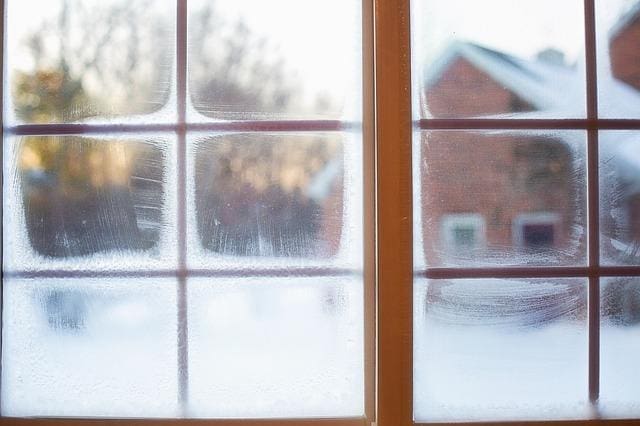
While frosted window panes may add a festive touch during the holidays, their charm fades as the new year progresses and winter lingers. At LeafGuard, we’re committed to helping you navigate the challenges of home maintenance, including the tricky task of managing your windows. Addressing frosty windows is essential, not only for aesthetic reasons but also to avoid costly heating bills associated with inefficient windows. Here, we offer practical advice on preventing window frost to maintain warmth and efficiency in your home.
Why It Happens to Frosted Window Panes
First things first. Why is it happening? Well, very simply, there is moisture near the window. The window gets extremely cold and the moisture is drawn to the window and therefore, freezes on the window pane. The reason you should care is that the frost, once it melts, will create problems for your window. Water and wood do not do well together, so it’s in your best interest to keep as much water away from your interior windows.
In order to prevent frost from showing up on your windows, there are two things you need to look at in order to keep your windows dry and frost-free. 1) Reduce the moisture in your home and/or 2) stop cool air from contacting your inside window pane.
Reduce Moisture
The first way to prevent frost on your windows is to reduce moisture in the room or rooms where the problem is occurring. And while it seems odd to want to take moisture out of the air in winter, a time when we assume the air dries up, many home produce too much moisture. So, while it seems counter intuitive, getting rid of or managing the moisture in your home is actually beneficial. Several areas where homeowners can improve the amount of moisture that is release in their homes is to add water efficient shower heads and home appliances. Another important area to analyze is your dryer ventilation. A properly ventilated dryer can go a long way in reducing the amount of moisture in your home. And finally, if all else fails, add a portable home dehumidifier to the room that is giving you the most problems.
Stop air leakage – Caulk or use Weather stripping
The other guilty culprit to that frost on your windows are windows that do not keep out the cold. If the cold can easily get past those storm windows and bring down the temperature of your inside window pane the chances of frost increases. On the flip side, if your inside window is on the leaky side, frost can appear on your storm windows. Either way, taking the time to seal off any leaks is key to keeping frost away! Here are the two options that you have. First, get yourself some window weather stripping and line your window as instructed. Secondly, purchase some silicone caulk and seal the perimeter!
Stop air Leakage – Replace loose or missing window glazing
If you feel that the sash and the frame of your window isn’t the problem, you should probably look to the glass. Especially if you are seeing frost or condensation develop on your windows. As your windows get older the glaze will start to chip or loosen, allowing air to sneak through the glass. If you are feeling dangerous, follow these steps to reglaze your window panes.
- First, get yourself a putty knife and remove old putty.
- Then, detach the pane and add some fresh putty
- Put back the pane and add glazing points (small metal clips to attach to the sash).
- Push the points into place with a regular screwdriver.
- Apply a thin bead of putty and use a clean putty knife to smooth into place.
In Madison, there are many homes that suffer from these issues. It can be hard to solve in the winter if it’s really cold outside, but it’s a good idea to take these tips and use them in the warmer months to fix up your home and make it more comfortable for the coming year.



